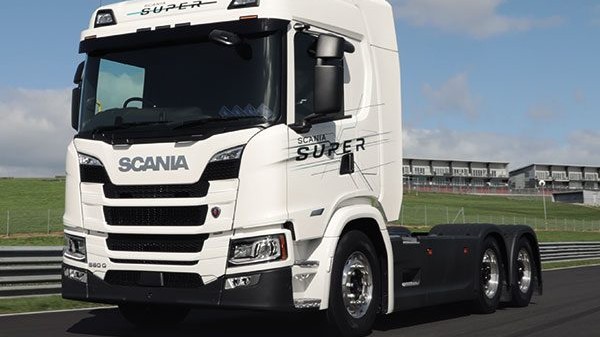
Customers and the media recently had a crack behind the wheel of two of Scania’s most advanced powertrains: the 25P battery electric and the new 560hp six-cylinder Super.
If more proof was needed that Scania New Zealand were on a charge second to none, it’s this: 19.5%. That was the company’s market share (over 16 tonne) at the end of September.
“The Scania New Zealand team has done a very good job here so far. We’re the market leader, but we’re not satisfied,” says Scania New Zealand’s new managing director, Victor Carvalho. “We’re investing a lot in New Zealand with our brand, facilities and people, increasing technicians and salesmen to keep that leadership.”
Having landed only two days before, Victor has wasted no time getting into the job. Brazil-born, his previous posting saw him lead Scania Portugal for the past four years.
“I’m still recovering from jetlag, but I couldn’t pass up this opportunity to meet our customers and the media this week,” he says.
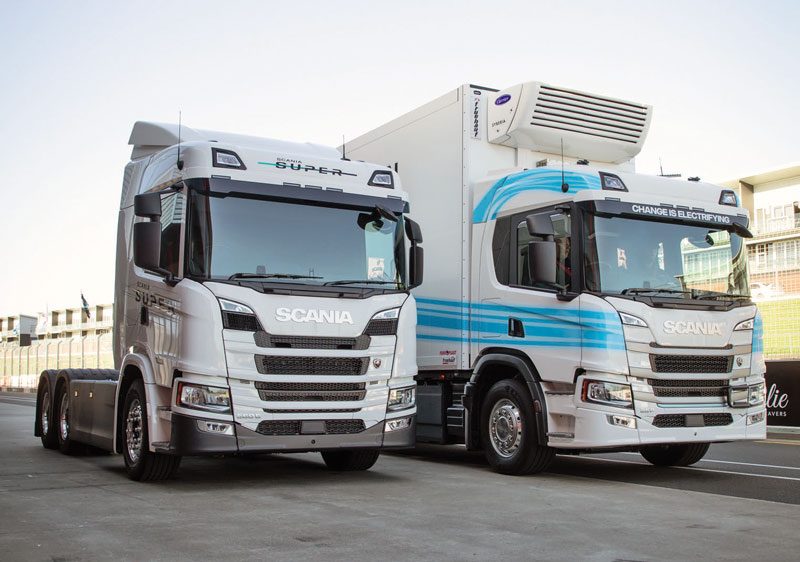
And an important week it was, as Scania New Zealand took over the Hampton Downs racetrack to show off its wider range of solutions and give guests a taste of its new six-cylinder/12-speed Super powertrain and 25P battery electric vehicle (BEV).
The Scania Super 560 is powered by Scania’s latest DC13 173 13L engine in Euro-6 trim. Headline numbers are a power output of 412kW (560hp) and torque of 2800Nm (2065lb/ft). The 13L Super platform is also available in 500, 460 and 420 varieties. Euro-6 is achieved by twin SCR.
The latest DC13 is partnered with Scania’s new G33CM Opticruise gearbox.
“The gearbox is smoother- shifting and better matched to the engine. The software that controls it all is next-generation and fully integrated,” comments Deon Stephens, sales director at Scania New Zealand.
The Super package promises impressive efficiency gains over its predecessor. “From what we’re seeing in Europe, there’s an 8% to 10% saving in fuel consumption alone. We see that as also achievable in New Zealand. The new powertrain combined with the right specification and driver training can contribute to significant fuel and emissions savings.
“We’re predominantly a strong V8 market, but we see a lot of customers transitioning to six-cylinders for fuel efficiency and operating gains,” Deon adds.
And should they transition, we don’t see many drivers turning around feeling short-changed. While not on the same level as the outright punch delivered by Scania’s V8 powertrain, the new 560 Super’s torque output and delivery certainly push it into the 15L territory held by many competitors. Delivery is flat from 900rpm to 1400rpm, at which point power is virtually at its maximum (peak is 1800rpm). She’s sure grunty, and the thrust is maintained by the slick operation of the G33CM. When Deon says it’s “smoother”, he’s not exaggerating.
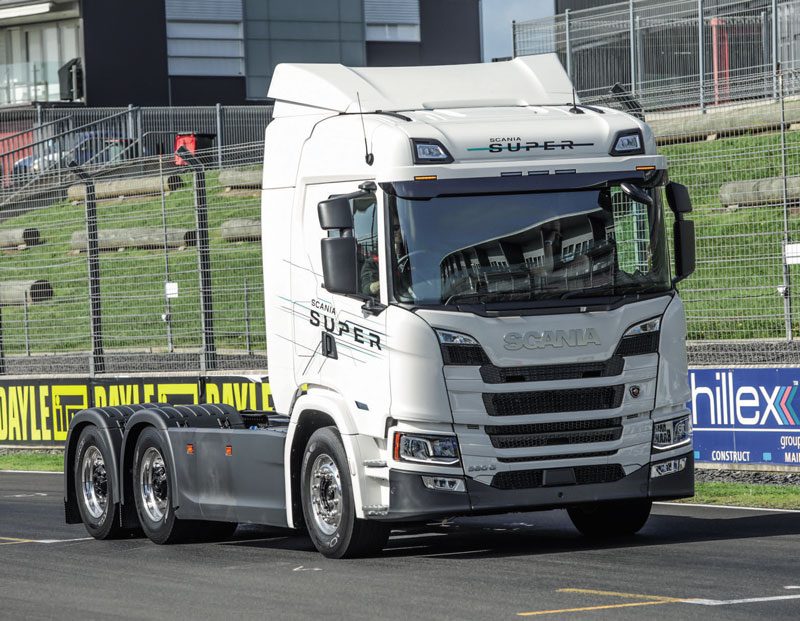
The final piece of the Super puzzle is its improved auxiliary braking. The new engine-integrated compression release brake (CRB) weighs only 7kg and offers up to 350kW retardation with fully integrated brake blending. The CRB system can be combined with Scania’s R4700D retarder.
It’s over a year since Scania New Zealand unveiled the 25P BEV (New Zealand Trucking, July 2022). We were lucky enough to feature it on the cover of the February 2023 issue in operation with the company’s first EV customer, the enterprising Reliance Transport of Mark and Grant Darrah.
“It’s been positive; they’ve approached the journey as a learning experience in partnership with us. Their two 25P units have done around 20,000km now,” says pre-sales and logistics director Rob Covich. “Enquiry and understanding of how those trucks are performing is hot.”
There’s more to come, too. “By the end of 2024, we should be into a 6×4 spec, which will suit our market well. It will offer twice the energy capacity and range, and a gross train weight of 64 tonne – so we’ll be into the true heavy-truck space,” Rob says. “We’ve had a lot of enquiry into how it can adapt to New Zealand. The order book is open now for next year.”
As we know, New Zealand’s VDAM rules have been a stumbling block for the EV rollout locally.
“We’re working around a few challenges with VDAM, the prescriptive rules make it a little difficult …” Rob says. Other challenges to EV adoption have included their up-front cost, limited subsidy opportunities and general hesitation. “A lot of people are waiting to see how they perform locally and globally. The driving factor is now coming from our customers’ customers, providing a lot of momentum.”
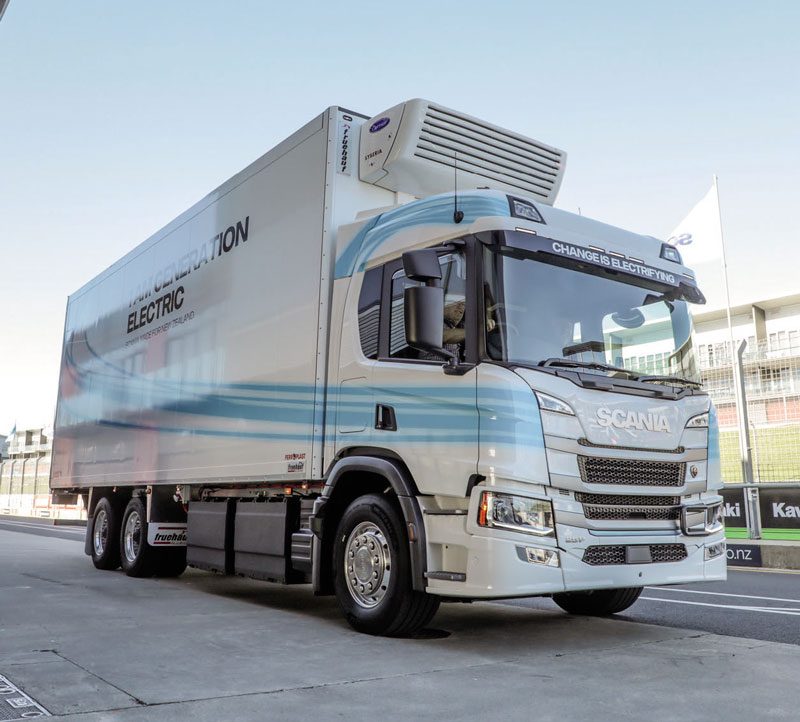

Of course, the lack of supporting infrastructure also needs to be overcome. “That’s key to uptake – and kicking off into longer-haul BEVs. New Zealand is in a good position to take advantage of green electricity,” Rob says.
Deon adds that ‘supporting infrastructure’ also extends inwards. “It’s not just charging infrastructure. We have to be service-ready, with the right training and the ability to service in each particular area. We have to make sure we have the right backup in place for the product to perform. It’s a significant investment in our own facilities.”
Designed for short- to medium-range routes in urban operation, the 25P is offered in 4×2, 6×2, and 6×2*4 configurations. Its electric drivetrain offers 230kW continuous and 295kW peak power, with corresponding torque figures of 1300 and 2200Nm. Battery capacity is either 300kW (nine batteries) or 165kW (five batteries), with a range of up to 250km.
The 25P gets on with ease; smoothness and uninterrupted continuity of power delivery that will surprise drivers of even the best diesel-powered trucks. It’s a different experience but one you acclimatise to within minutes.
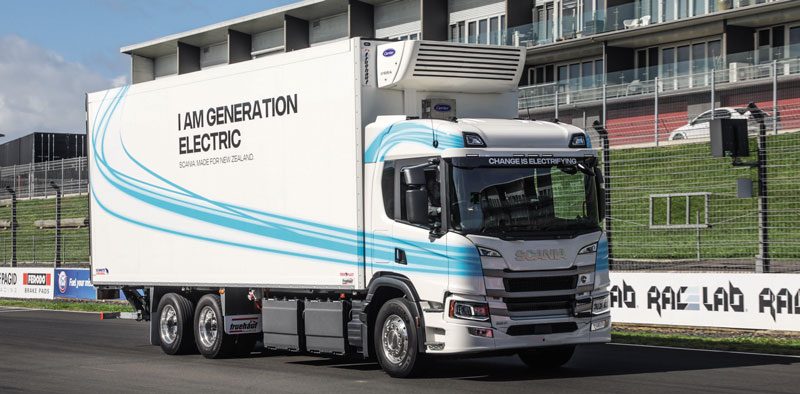
The 25P offers a gross combination mass of 29 tonnes, and for those applications that require it, a 60kW electric PTO is available. The Dhollandia tail lift and Carrier refrigeration system on the test-drive truck are perfect examples. Scania New Zealand senior product engineer Alfons Reitsma says they are specifically designed for BEV trucks.
“Our calculations include topography, train weight, average train weight, charging times, and cycled energy of all the componentry to give the best possible indication of the vehicle’s energy consumption.
“Then we must measure how often the tail lift goes up and down, how much energy is required for it to lift certain weights, and what it takes out of the propulsion system. Then we do the same for the electric fridge unit.” The driver can see what the fridge unit’s consumption is in cab.
“It’s not as easy to electrify a truck as a car. Ultimately, the whole vehicle has to be as efficient as possible,” Alfons says.
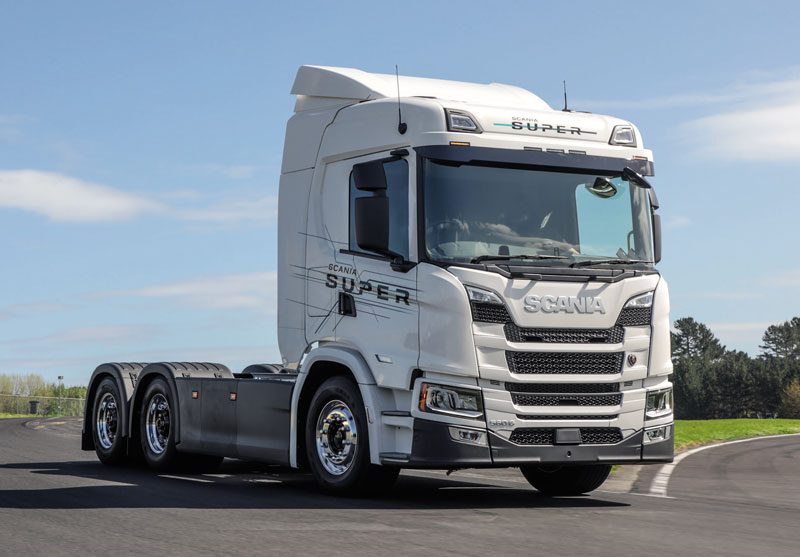
Read more
Canadian Classic
0 Comments7 Minutes
Split-quad PBS hero
0 Comments10 Minutes
Perler truck, Perler story
0 Comments12 Minutes
Firing on all Cylinders
0 Comments15 Minutes





